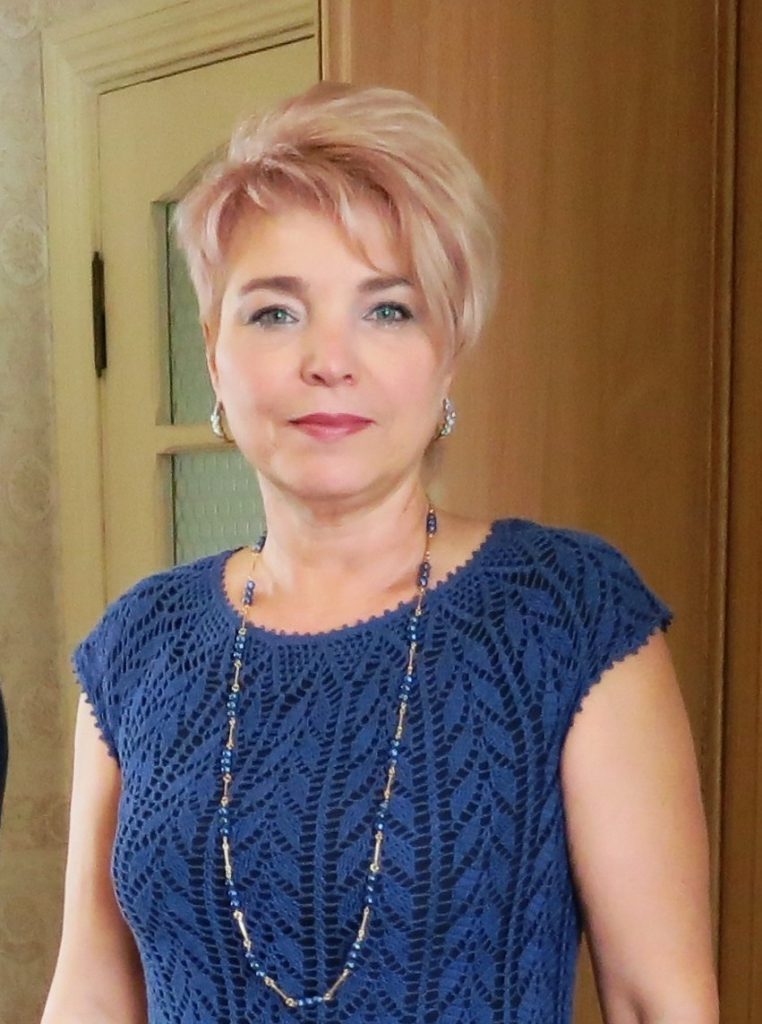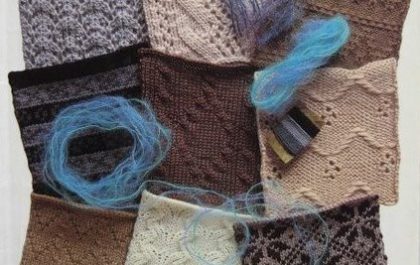
If you are looking for an unusual Christmas tree decoration, then be sure to use the tips from our master class on how to crochet a New Year's ball.
The finished product will be openwork and weightless, adding coziness to your holiday decor.
Such Christmas tree decorations must be handled with care; they are fragile, like glass toys.
In addition to openwork options, there are other ideas, for example, a ball can be knitted using the amigurumi technique, then you will get a bright ball, plain or with a pattern.

Crochet New Year's ball
For our first master class, you will definitely need patterns for crocheted napkins or other round openwork motifs. If you decide to knit a small openwork ball, then it will consist of two circular motifs connected to each other.
We will need the simplest set of materials to make crocheted New Year's balls; such New Year's creativity will not be a blow to the family budget, and some materials will probably be found in your home.
- White threads “Iris”, Russian production
- PVA glue
- An uninflated balloon (preferably round)
- Knitting tool of the appropriate size

Now we need to knit two identical round motifs, following the presented pattern. You can use our option or find your own scheme that you like better.
Schemes of motifs for tying New Year's balls can be found here***
At the base of our motif there will be 12 air loops, so the central hole will be large enough to then insert a deflated balloon into it.
Let's start by knitting the first motif: cast on 12 chain stitches and close them in a closed circle using a connecting post. Now we climb to the second row thanks to three lifting loops. In the next row we will have 24 single crochet stitches (23 stitches and 3 lifting stitches at the very beginning). It is necessary to knit the stitches into a ring, trying to keep them as uniform as possible, so that the loops are not too stretched or too tight.
In the next row we will have arches, they are knitted every two columns of the previous row. The arch itself consists of seven air loops. We knit seven loops, then skip two more stitches from the base of the chain and knit a single crochet into the next warp stitch. Next, we again cast on a chain of seven loops, and again close the arch with a single crochet. Using this principle, you need to knit eight arches in the third row. There will be the same number of arches in the next row, but this time they will consist of nine air loops. The base of the arch should come out from the middle of the arch of the previous row; you can knit it not specifically into the central loop, but into the arch itself.

In the next row, each arch must be tied with double crochets: 11 stitches in each arch without connecting air loops between each group of 11 stitches. The main part of the motif is connected and all that remains is to make three cones in the middle of each arch, and then knit chains of air loops between them to close the last row. Knitting a motif is not at all difficult; only three types of loops are used here, so even if you are holding the tool in your hands for the first time, you will cope with this task without any problems. The main thing is to follow the proposed pattern step by step, and you will also be able to master knitting snowflakes.
Now we need to make a second motive to make it crochet New Year's ball, diagram The same one is used for the motif, because we need the finished decoration to have a symmetrical round shape. For the second motif, the last row should not be knitted; it will be used to connect both resulting round motifs.

Crocheted Christmas balls
We will get the simplest ones crocheted New Year's balls, patterns It’s better to take elementary ones, for beginners, so that there are no difficulties during the work process. This is a great opportunity to practice before doing more complex work with larger balls.
Both round halves should be folded with the wrong sides facing each other, and then joined in a circle. Here we will knit like this - three double crochets, then two chain stitches, here you need to follow the diagram and step-by-step pictures in our master class. Thus, having finished knitting these elements in a circle, we will connect both halves into one piece. After this, we need to give the resulting workpiece a spherical shape and record the result.
You need to pour PVA into the plate, if necessary, dilute it a little with water, if the glue seems too thick to you - just a couple of tablespoons per 100 ml of glue. The resulting knitted workpiece must be dipped in glue and left for a few minutes so that the glue properly saturates the threads. Then you need to take out the workpiece and squeeze it a little to remove excess glue; you can lay the product on a dry cloth and blot it slightly. If you have too much glue in the threads, the finished decoration will take too long to dry and may turn out heavy.

Now we need to roll the rubber ball into a tube to make it easier to insert it into the central hole of our workpiece. The rubber tube must be inserted into the hole and pulled out from the other side. Now you need to stretch the knitting, but at the same time you need to leave the tail length so that it inflates more evenly inside.
All that remains is to form crochet New Year's balls with patterns, To do this you need to inflate the ball. It should be slightly larger than the knitted piece, since it may deflate slightly during drying. The thread with which you tied the rubber end must be periodically moistened, since after drying it will tighten the knot too much. When the knitted piece is completely dry, you need to cut off the knot so that the ball begins to deflate slowly, and when it decreases to a minimum, it can be removed from the spherical knitted decoration.

Now you have an openwork Christmas tree decoration, all that remains is to tie a loop on top and you can hang it on the tree. The finished decoration can be coated with glitter varnish, and glitter can also be mixed into glue, then the Christmas tree decoration will turn out even brighter and more original.
As you can see, it’s not at all difficult to crochet New Year’s ballsm, and a novice craftswoman can handle such work. It is also easy to shape the knitted item into a ball shape, but you need to be patient so that it dries completely and does not deform when you remove the ball.

Crochet New Year's ball: diagram and description
Using knitting, you can create original Christmas tree decorations, be it a knitted miniature Christmas tree or an openwork ball. Using the amigurumi technique, you can knit multi-colored, bright, striped products that will decorate any interior. They can be used to decorate a child’s room, because such soft toys are completely safe for children, they can play with them. They can also be done with knitting needles, but expanding and narrowing the fabric is easier if you use a hook.
To get a crochet New Year's ball using the amigurumi principle, diagram and description you will need for the simplest even ball. Using this scheme, you can get it in any size: from the smallest ones, for tying a wooden bead, to large ones, which we will use to decorate the Christmas tree.
Unlike the previous option, for an amigurumi toy we will need a spherical base so that the finished decoration holds the shape we need. Of course, you can buy a wooden or foam plastic blank, which we usually use to make Christmas tree balls with our own hands. But we offer you a budget solution - use an old plastic Christmas tree decoration.

Crochet Christmas balls
When we have decided on the basis, we can start making crocheted New Year's balls. Here we only need threads and a tool, and you can also prepare a marker pin so as not to get confused in the rows. If this is your first attempt, then it is better to opt for a plain product, and in the future you can impose a variety of striped toys and even with a geometric pattern.
First we need to make an amigurumi ring and knit six stitches into it, then the product will be expanded in each row according to the pattern of a regular circle. By the eighth row we should have 48 loops - in each row their number should increase by six. Then you need to knit without changes, without increasing. From rows 9 to 15 we will knit 48 stitches, and from 16 the decreases will begin.

Decrements in an amigurumi ball are made according to the same principle as increases - in each row you need to decrease six columns. Thus, by the 21st row you will have only 12 columns left, and in the next row you will have 6 columns left, after which you just need to tighten the hole and the ball is ready for you.
You definitely need to count how many rows with increases you have knitted, because in your knitting you will be guided by the size of your plastic blank. Accordingly, we will have the same number of rows and decreases, and, most likely, we will knit the same number of rows without changes. In the presented version, we have a 7-7-7 scheme.
This is the simplest way to crochet New Year's balls; you won't need patterns at all, but in the process of creating a knitted fabric, it is important to “try” it on a plastic blank so that the fabric fits tightly to the walls. You can choose a new color of yarn for each row so that the finished decoration is bright and unique.

Related posts
About the Author

Welcome !
My name is Lilia. The main hobby of my life is knitting. I started with knitting needles and switched to a knitting machine. In 1988 I got acquainted with crochet - Romanian lace. About 10 years ago I became interested in Irish lace and Shetland knitting. And now I’m trying fillet crochet. On this site I want to share with you my 45 years of experience in various knitting techniques.
Latest publications
Пуловер Florarium
Jumper with braids.
Пуловер Dover
Blog Subscription
Be the first to receive new items!



